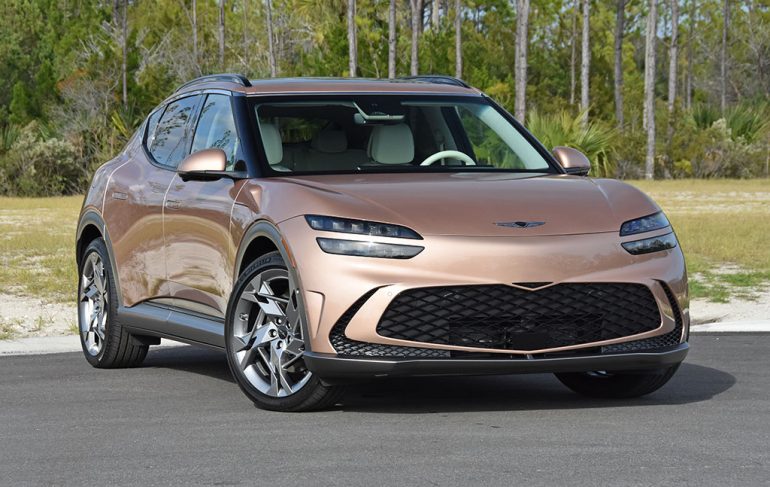
The electric vehicle (EV) movement is encountering ebbs and flows with the general public still without a definitive choice on making the switch. In the full scheme of making a bold statement in the EV world, manufacturers like Genesis have paved an interesting path for defining luxury EVs with vehicles like the latest GV60. Having another brush with the Genesis GV60 in the same top-level Performance trim quickly reminds me that the landscape of EVs is pretty solid, even for premium and luxury offerings, but doesn’t have the support of a viable infrastructure to pivot EVs into a higher gear.
The Genesis GV60 remains to be a fresh idea for most, as it was only sold in certain areas of the United States when it was first introduced as a 2023 model year. Now, the GV60 is readily available with some Hyundai dealerships stocked piled with the smallish luxury electric crossover. Despite its uniqueness, the GV60 feels more like a luxury version of the Hyundai Ioniq 5, which isn’t a bad thing considering how much I liked the Hyundai. However, the GV60 seems to have more of a unique character with its distinctive design and stature on a short wheelbase. The soft curves and bubbly proportions all work well and often turn heads, especially when my GV60 Performance test vehicle is adorned in its Atacama Copper exterior paint. From the stylish 21-inch aluminum wheels to the rounded sheet metal, the GV60 has the right looks for its purpose and does luxury well inside and out.
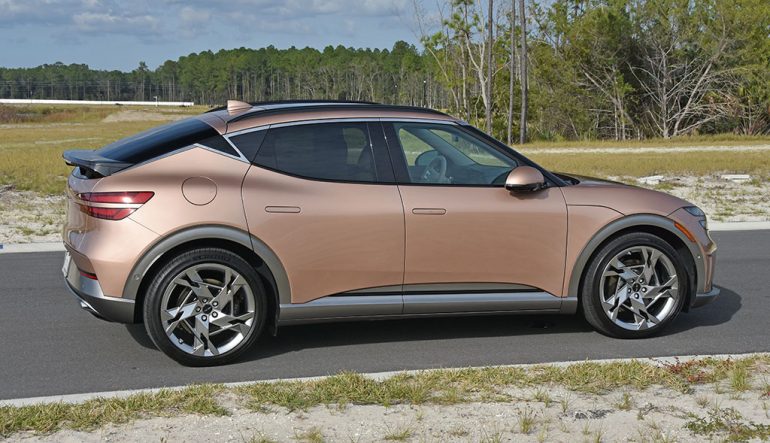
As an EV, the GV60 Performance is quite a surprising vehicle in that it has a healthy dose of power from its two electric motors, one at each axle, to power all four wheels. Together, they normally provide 429 horsepower and 446 lb-ft of torque. However, that power can be dialed up to 483 horsepower and 516 lb-ft of torque when using a Boost feature that’s good for a 10-second burst by pressing the steering wheel Boost button. Such an experience is almost like injecting Nos into a stock General Motors LS V8 engine. Using the Boost feature from a stop will get the GV60 Performance up to 60 mph in just 3.7 seconds, with a thrilling feeling of the instant torque kicking you in your back from the start.
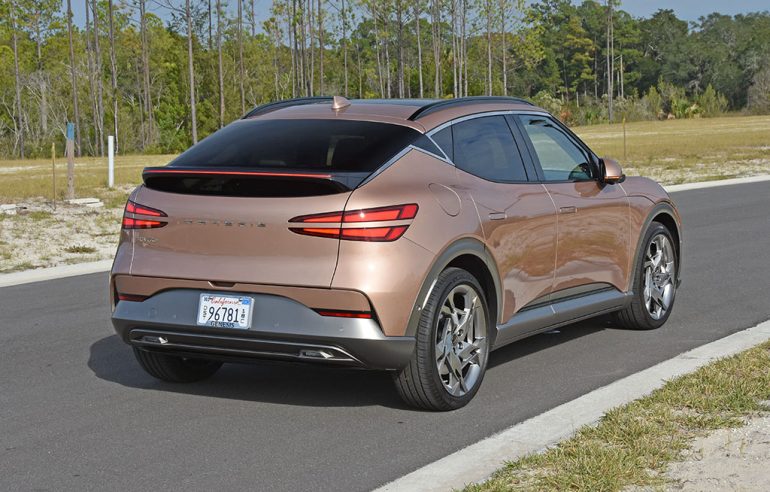
As stated in my previous review of the 2023 GV60 Performance, there’s a lot to like about the at-home feeling of the Genesis EV crossover, where it’s a proper luxury cruiser with a substantial amount of power awaiting to be unleashed. The suspension, with its adaptive dampers, does well initially to prevent unwanted body movements but tends to soften up a bit too much for added confidence when you start to push the GV60 a little hard on twisty roads, even in the sportier firm setting when using the Sport drive mode. There’s a noticeable amount of body dive and pitch upon heavy braking or acceleration. The large brakes do well to curb the speed of the GV60 with 4-piston calipers up front.
One particular feature that I failed to explore in my previous review of the GV60 but had a chance to check out this time around is the unique VGS (Virtual Gear Shift) mode. The VGS mode is hidden in the drive mode settings, where you can enact what appears to be Genesis’ way of emulating a vehicle with a gas-burning engine and a manual-shiftable automatic transmission. Here, the VGS mode is quite entertaining and fun, where you can virtually rev an engine, which essentially emits an audio track that mimics a gas engine along with an RPM gauge in the 12-inch digital gauge cluster that follows that revving sound. Not only that but when driving with the VGS mode enabled, power is held back some so the system may produce a progressive power band through the virtual RPM range and then give you power blips to emulate the shift of a transmission. You can also shift manually using the steering wheel paddles that are otherwise reserved for changing the braking regen modes and level to upshift and downshift the virtual transmission. I actually laughed a little and shook my head at the same time with such an intriguing experience in the VGS mode. I suppose if someone ever wanted that “natural” feeling of driving a normal gas-powered vehicle in their EV, the VGS mode aims to satisfy. Such software programming for the VGS mode demonstrates what is possible in the future for EVs being more like gas vehicles.

Somewhat reiterating my experience from last year, the newer 2024 GV60 Performance had an identical experience where I was able to best the stated range of 235 miles to nearly 245 miles of range. During that driving experience, I obeyed most speed limits and was conservative on the usage of the climate control in our delightful 68-degree Florida Fall weather. The 21-inch wheels hurt the range for the GV60 Performance model, where the Advanced trim gets away with smaller 20-inch wheels and an EPA range of 248 miles.
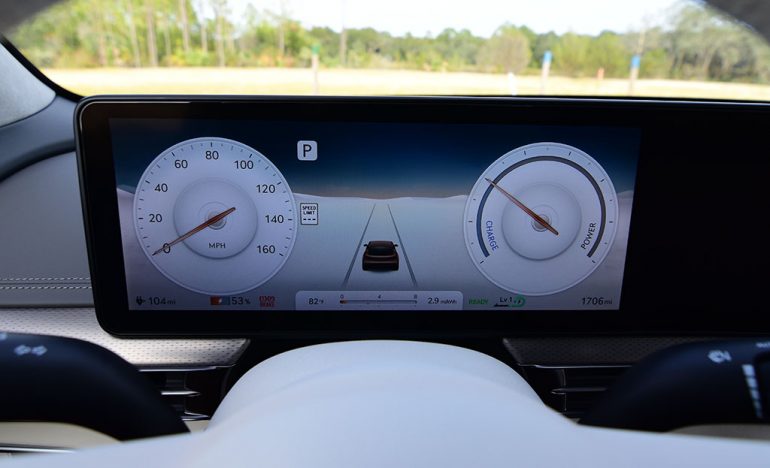
The Genesis GV60 remains to be one of the fastest-charging EVs on the current market, matching its Hyundai and Kia counterparts with an 18-minute charge time from a 10% state of charge up to 80% using a 350 kW DC fast charger. The 800-volt architecture and the ability to sustain a prolonged charge rate of just over 230 kW is what gives the GV60 the edge and ability to fast charge. Using a Level 2 240v charger at home, a full charge takes about 7 hours for the depleted 77.4 kWh battery pack.
Overall, the EPA estimated 97 MPGe city and 82 MPGe highway figures are legit for the real world, and you’ll often best those to get about 3 miles per kWh, which is about 101 MPGe.
The cabin of the Genesis GV60 is mostly lavish in its appointments that feature an abundance of soft-touch surfaces that emulate a surprising luxury theme. The uniqueness of the interior places the GV60 Performance on a pedestal that vehicles costing twice as much reside. Even the lower door trim is soft-touch. As I said in my previous review, the GV60 hits well above its class but tends to skimp on things like offering a massaging feature on the front passenger seat when the driver’s seat has such a feature. However, I do welcome the traditionalist aspects of the functionality where there is a normal start-stop button to turn the vehicle on or off instead of dealing with those annoying automated systems, and the gear shifter, while unique, is straightforward and easy to use.
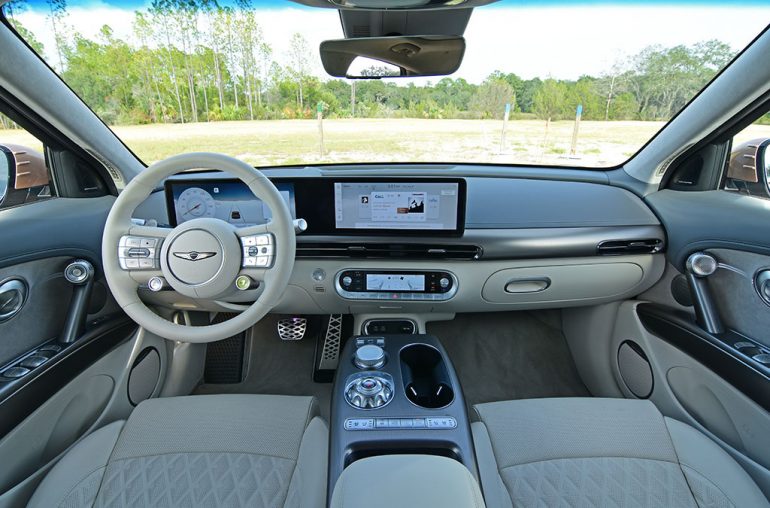
The infotainment system on the Genesis GV60 Performance mimics what is found on other new Genesis vehicles combining a 12.3-inch touchscreen and redundancy of control through a physical scroll and toggle knob that has a user-friendly glass touchpad on its surface. Use of the infotainment system can be slightly intimidating at first, but you eventually overcome the typical learning curve. The integration of Apple CarPlay and Android Auto remains USB-connected only despite having a convenient wireless charging pad angled and embedded into the front of the armrest storage area.
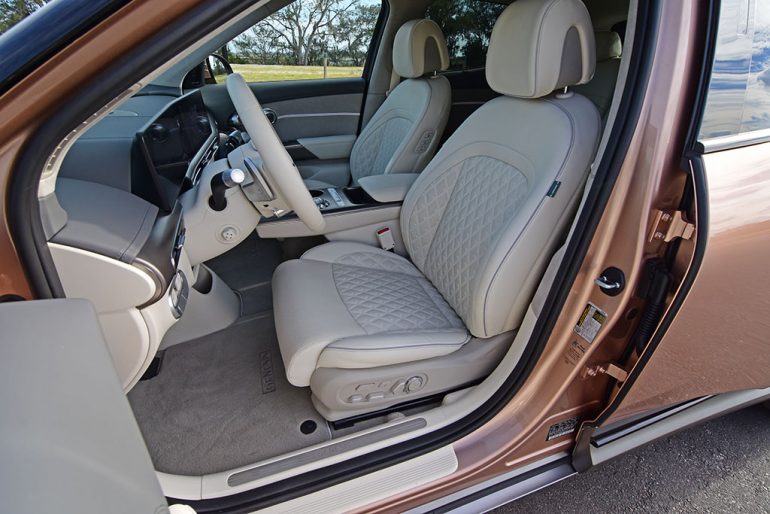
Seating areas are surprisingly accommodating for the GV60’s size, that is classified as compact. There are plentiful power adjustments in the front seats, and the rear seating area is usable for at least two adults of most sizes and one child in the center, who doesn’t have to cradle any floor hump because of the flat floor throughout the vehicle – because EV!
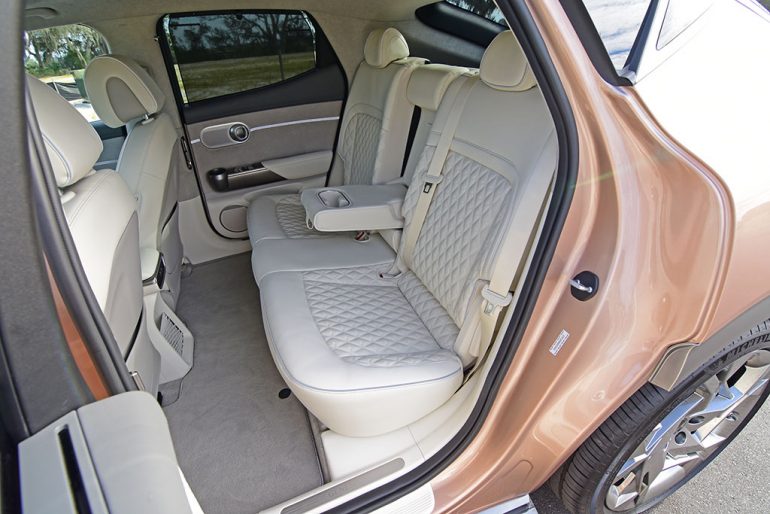
Genesis bundles up all of the expected active safety features, which include the highlights of blind-spot monitors and live view monitors, lane-keeping assist, color heads-up display, 360-degree surround camera, forward collision alert/emergency braking, and the latest highway driving assist function using the smart cruise control with lane-centering and lane-changing.
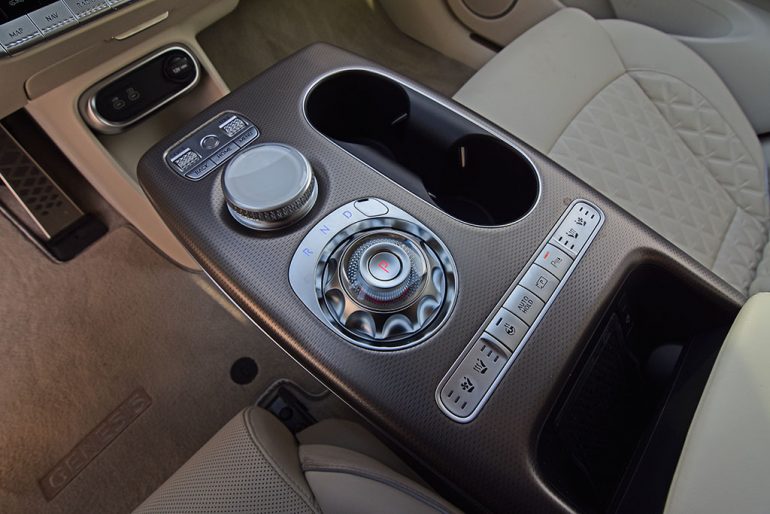
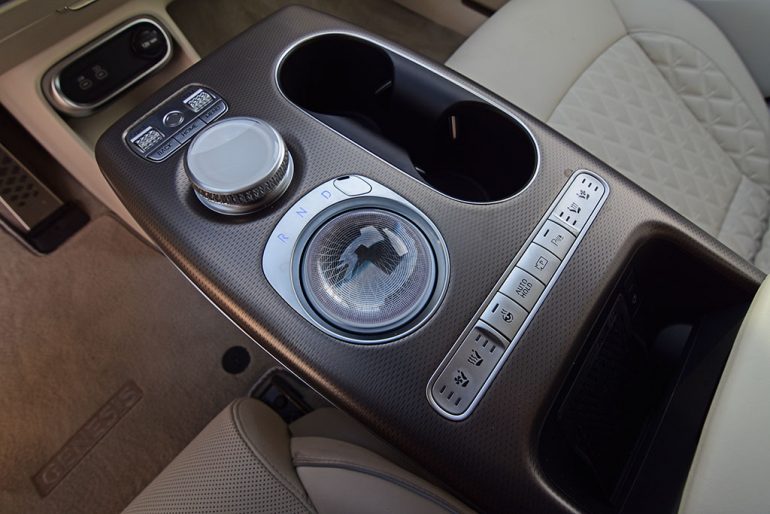
The 2024 Genesis GV60 Advanced AWD remains at a respectable starting price of $60,550, but Genesis now offers a standard rear-wheel drive (RWD) model for 2024 starting at just $52,000 with a longer range at 294 miles but with only 225 horsepower. My loaded-up top trim GV60 Performance AWD model comes to a price of $69,550, which may be a difficult pill to swallow for a compact luxury crossover that happens to be electric. However, it’s good to finally have the availability of a lower-cost RWD option, in addition to the GV60 now being available across the USA instead of only offered in a handful of states as it was last year.

Malcolm Hogan is the founder and editor of Automotive Addicts, a trusted voice in the automotive media world for over two decades. With 20+ years of hands-on experience covering the industry, Malcolm has built a reputation for delivering honest reviews, sharp insights, and in-depth coverage of everything from new car debuts to high-performance test drives. Passionate about the evolving car culture and staying ahead of the curve, Malcolm continues to lead Automotive Addicts as a go-to destination for enthusiasts and industry insiders alike.